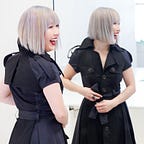Level up design maturity with effective design reviews (1 of 3)
Part 1:
Why Design Review is key to healthy product culture?
Design Crit vs Design Review
Humans, in general, suck at receiving feedback.
We also suck at giving feedback, although most of those people have too much pride to admit it.
Building a safe design review culture is essential to fostering healthy product culture. I’ve seen some high and low reviews; Highs left the product team curious, excited and driven. The lows left the team stuck, burned out, working in silos, and resulting in high staff turnover — not a good place to be.
This guide is aimed at providing some insights for both designers and stakeholders, especially if you are in a start-up, building a design feedback ritual, a fresh PM, or this is the first time you’ve worked with a designer.
I’ve broken the guide into 3 parts
- Why Design Review is key to healthy product culture?
- Design Crit vs Design Review
- When to review? Who should part of that process?
- Do’s & Dont’s
- The art of effective feedback
- Amp up your review culture with these pro-tips from top leaders
Why Design Review is key to healthy product culture?
Design Review should be part of the DNA of a supportive product team. The success of a design review hinges upon the attitude, mindset, respect, and behaviours of everyone involved in the process.
- It’s the most important forum for both the product and extended team.
- It’s an opportunity for everyone to align on design, directions and goals.
- It’s important to share early and often for designers to know they are on the right path.
- It enables the team to exercise a mindset of “experimentation”, which means being agile and open to trial and error.
Healthy feedback culture and agile process goes hand in hand.
It’s very important to point this out: Team alignment on an agile way of working is essential to fostering appropriate critical feedback habits. What’s shipped are experiments waiting to be tested and learned from.
Top-down management teams are often resistant to iterative design, most of the decision gets bottle-necked by the leadership team. Hence, product teams become feature teams, with a lack of autonomy and subsequently the confidence to provide effective feedback.
Team members need to value continuous improvement over “right-the-first-time”, and they need to be working in a process and culture that accommodates and reinforces that value. Source: Discussing Design
First things first; get your north star strategy ⭐️ aligned.
This might seem obvious but you’d be surprised on how many product leaders out there fail to establish and communicate a solid north star vision and definition of success.
Success in product-led companies is measured by outcomes, not outputs. That north star vision will inform the strategy roadmap and design focuses on the outcome.
Expecting a product team to design random features is like shooting bullets in every direction, resulting in opportunity costs for the company and high designer turnover — good designers rarely want to work in a feature factory, let alone one without concrete strategic goals.
Before designing anything, a product squad MUST BE informed by the project objectives, including problem statements, definition of success, target users, existing data, feasibility, and most importantly: why solving this problem for the user or the business is essential.
Design Crit vs Design Review
Design critique
Standalone sharing sessions when designers share their work early to encourage buy-in and collaboration. Informal. This can happen as frequently as needed to improve design outcomes for each project.
Who: Usually between designers, sometimes the product squad (ENG and PM), Individual check-ins with SME stakeholders when needed. Focus on small groups.
What: Encourage the design team to build habits to share early and share often. Weekly between designers or product teams should be a minimum. Encourage different stakeholders to bring in their unique perspectives.
-
Design Reviews
Share process and inform stakeholders, usually done at the end of the creative process (i.e. mid-fi to hi-fi) in order to gain approval and move forward.
Who: Product, Design, Engineer and Stakeholders (C-level leaders if the company is a start-up)
What: It’s the forum to connect and inform all relevant parties about the design progress. Review is a good proactive step to seek feedback from peers to leverage their strengths, expertise, and to receive different points of view to help improve design solutions. This is an opportunity for designers to share their process so that we can influence design thinking through this session.
